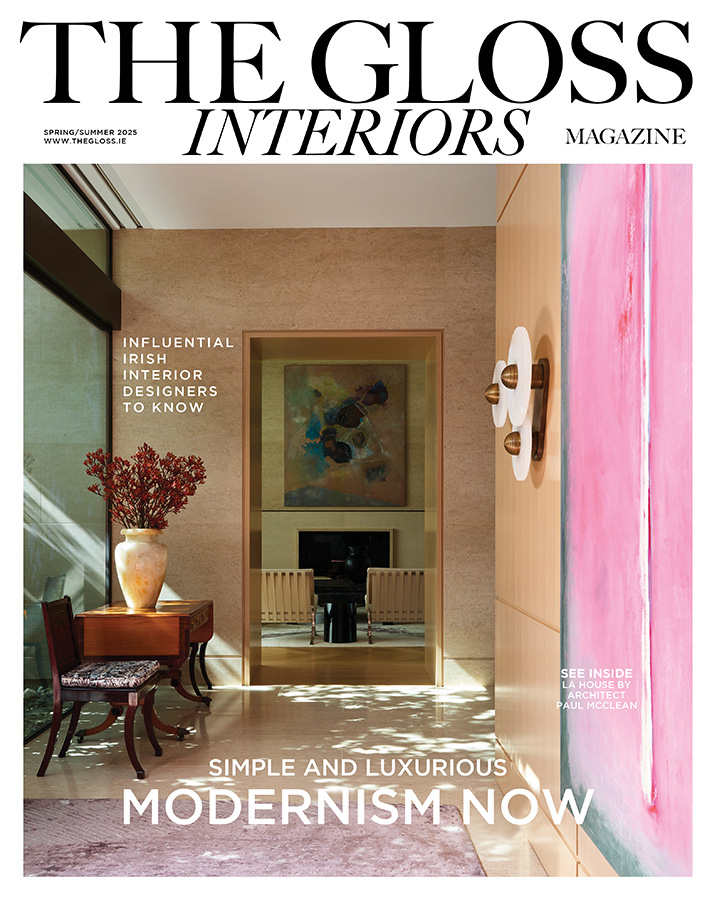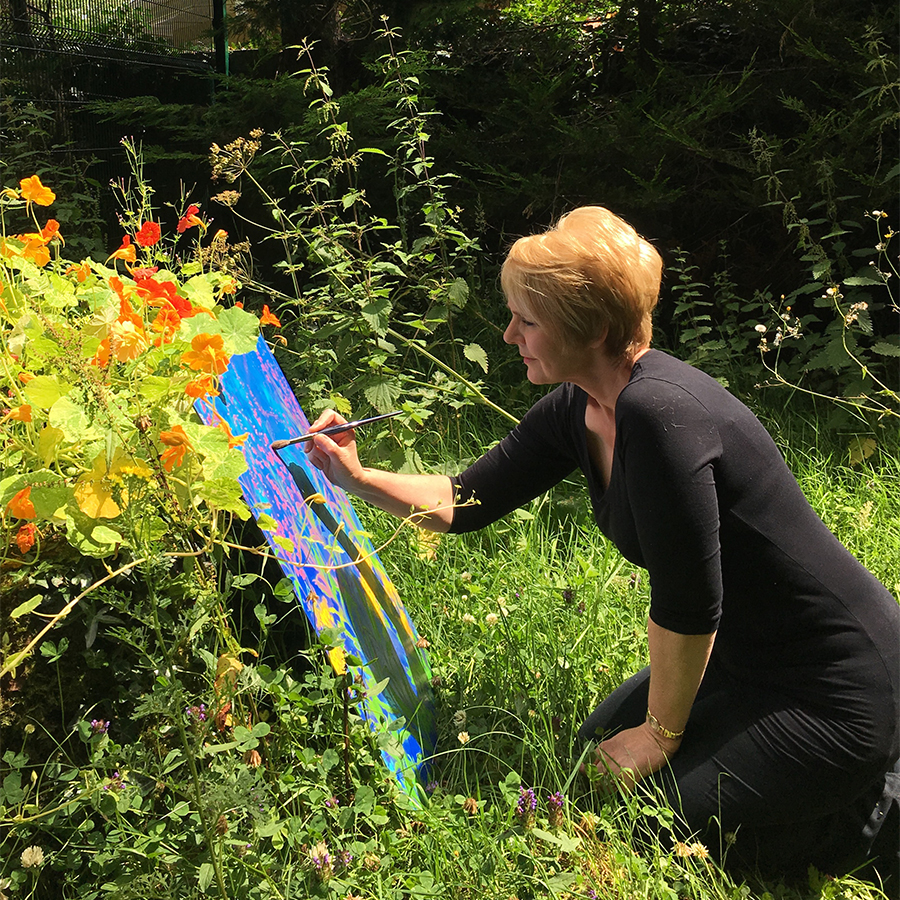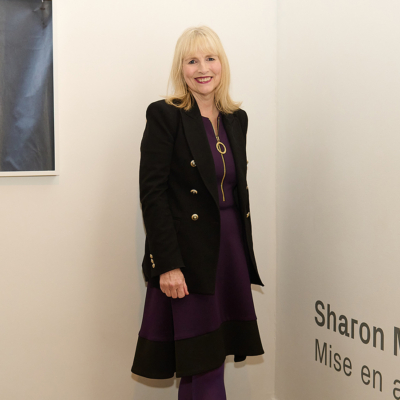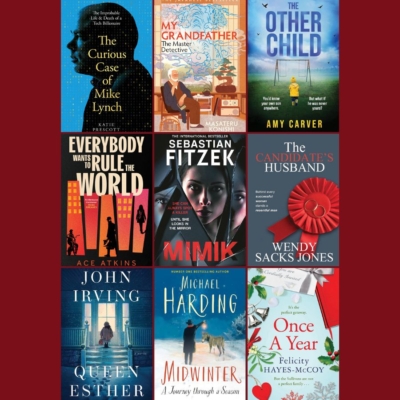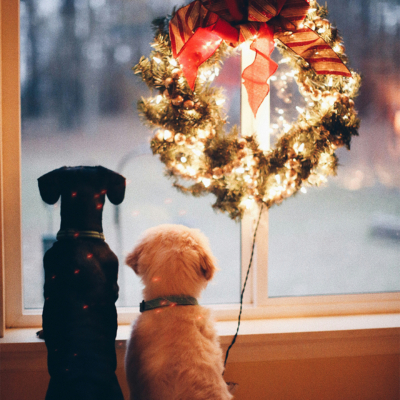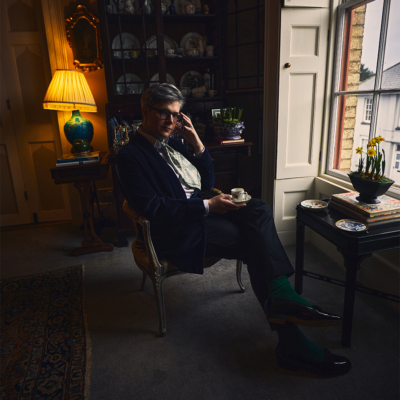Kathrine Geoghegan’s latest exhibition explores the course of the River Liffey as it flows from its source to Dublin Bay …
Who or what kickstarted your interest in art? It all started with my mother Ada – the influence of a mother is so strong on a child. Mum is an artist, so she always encouraged me to draw and paint as soon as I could hold a crayon. It also kept me quiet while she painted on our small kitchen table! Children have an innate love of drawing, making images and playing with colour, so it just needs that little bit of encouragement. As Picasso said, “Every child is an artist. The problem is how to remain an artist once we grow up”.
My father was also a strong influence as a nature lover. He would point out aspects of the landscape. I have strong memories of climbing Mount Brandon in Co Kerry with him, about 8-years-old, listening to skylarks singing their complicated song. He was a Bord na Mona engineer and would take us on the bog. This instilled a lifelong love in me, which greatly inspires my work today as it explores themes of conservation and the preservation of wild places.
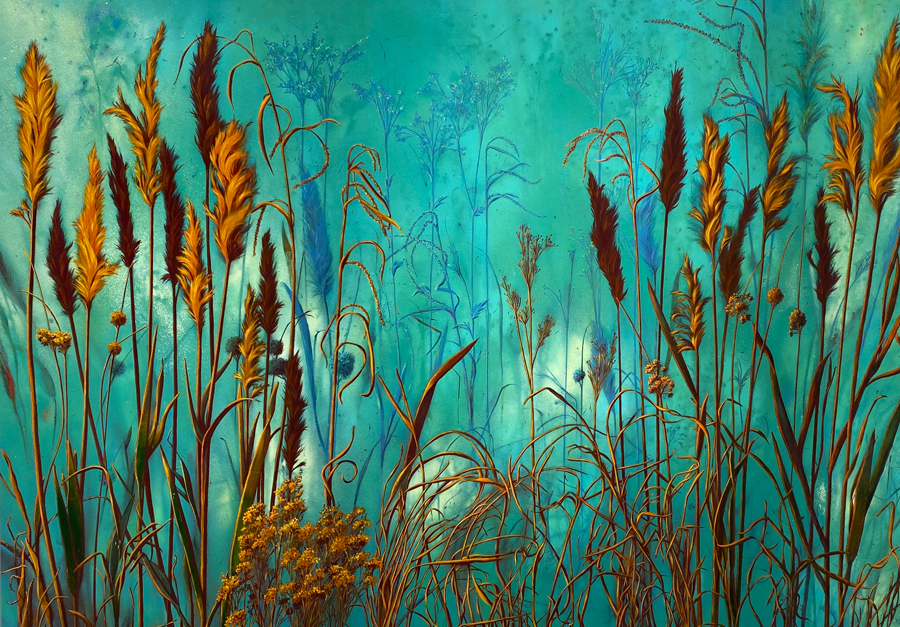
‘Tearmann’
How did your practice develop? When I left school, I joined an advertising agency doing black and white paste-up artwork for newspaper ads. This was a manual method for creating page layouts before the advent of digital technologies. There was some creative input required, but not as much as I craved! I then met my husband, settled down and had four children. I was also involved in the family business, so I had little time for creative work. With the milestone of 40 looming, it hit me that I wasn’t doing what I really needed to do, so I resolved to make time for a creative life. I think this is a common theme with female artists – putting their artistic work on hold. I have a few younger artist friends who managed to maintain an artistic practice while having a family, and I admire them so much.
When I first resumed painting, I was a bit of a scatter gun, seeking the subject matter, themes and also materials that spoke to me. During this time, I attended the National College of Art and Design evening courses, and over a few years tried everything from oil painting to clay modelling. I learned about technique, which was a necessary period in my development as an artist. Now I break those rules!
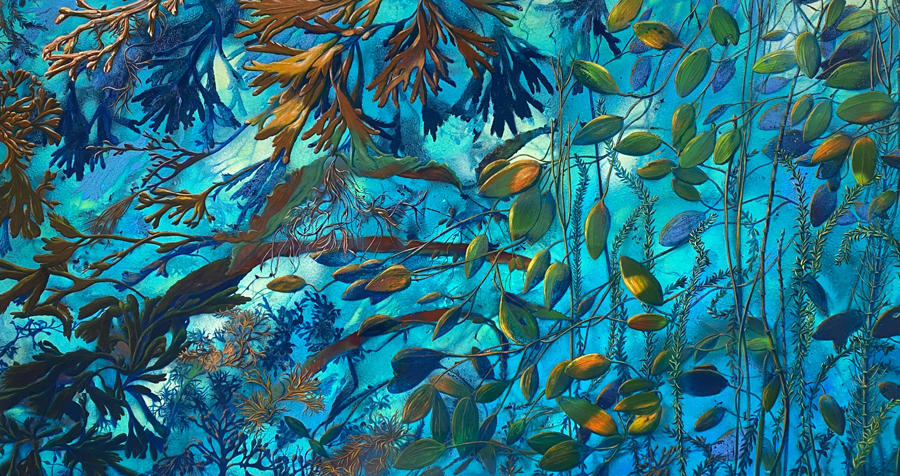
‘Confluence’
How and where do you work? We built a two-part studio behind our home in Straffan, Co Kildare where I work unless I’m away on an artist’s residency. One part of the studio has a wall of glass facing northwards, so that there is no direct sunlight or shadow, which is perfect for working. The other part is equipped for spray painting with good ventilation.
In 2012, I started experimenting with acrylic spray paint. I developed a technique of using organic material in my work. I planted a wildflower meadow behind my studio with native Irish seed. This is a great resource for me, having access to a variety of plants I use fresh during the growing season, and I also dry and press them for winter. I make an assemblage of organic material which I build up layer by layer, spraying colour through each layer, working intuitively. I paint on aluminium that’s carefully primed which allows me great freedom in mark making. I then draw and scrape into the paint, adding and subtracting using a variety of tools. When the acrylic paint is dry, I add oil glazes that allow the colours underneath to reflect back and add depth. Light is a most important feature of my paintings.
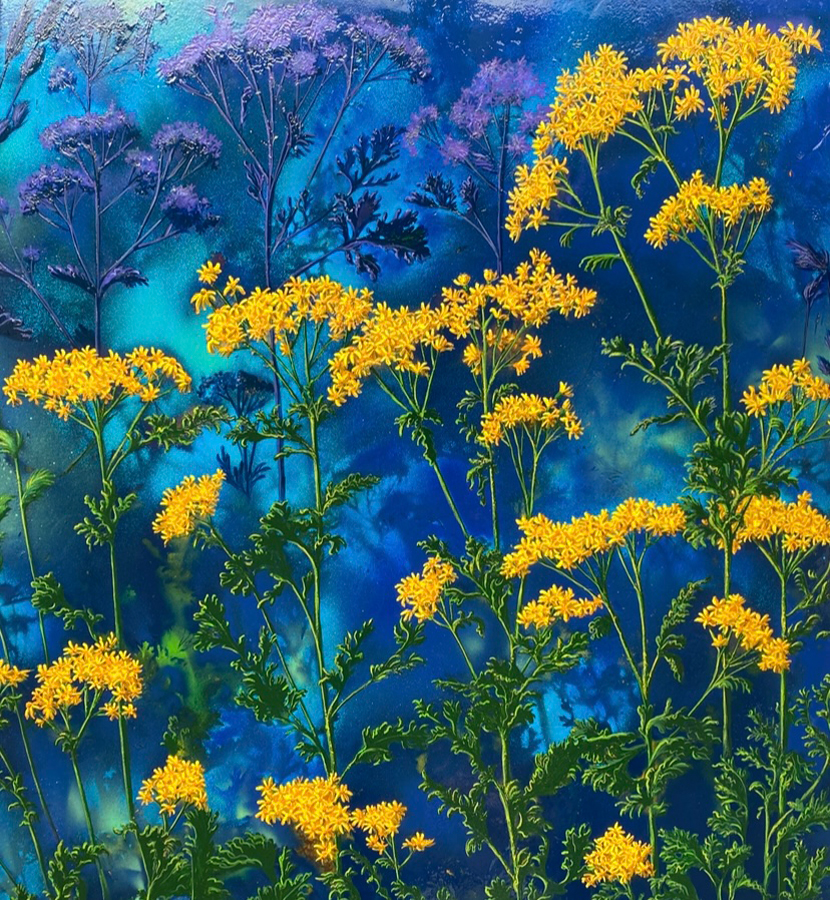
‘Blazing Ragwort’
Tell us about your current exhibition? My current project follows the River Liffey from its source to where it meets the sea in Dublin Bay. Its 130 kilometres or so snakes through various habitats, irrigating and nurturing them as it goes. The embryonic river bubbles up at its source in the blanket bog of the Wicklow Mountains until it finally becomes tidal, passing through our city quays. Each of these habitats has its own botanical signature. The river runs through Straffan and is a constant in village life. From the Liffey Descent canoe race that starts at the weir there, the anglers who come from far and wide to catch trout, and especially the wealth of wildlife the river supports, we are fortunate that we enjoy its benefits daily. The river also provides much of the drinking water to Dublin and the wider hinterland. By tracing the river’s path, I hope to raise awareness of the value and importance of the Liffey, and its surrounds.
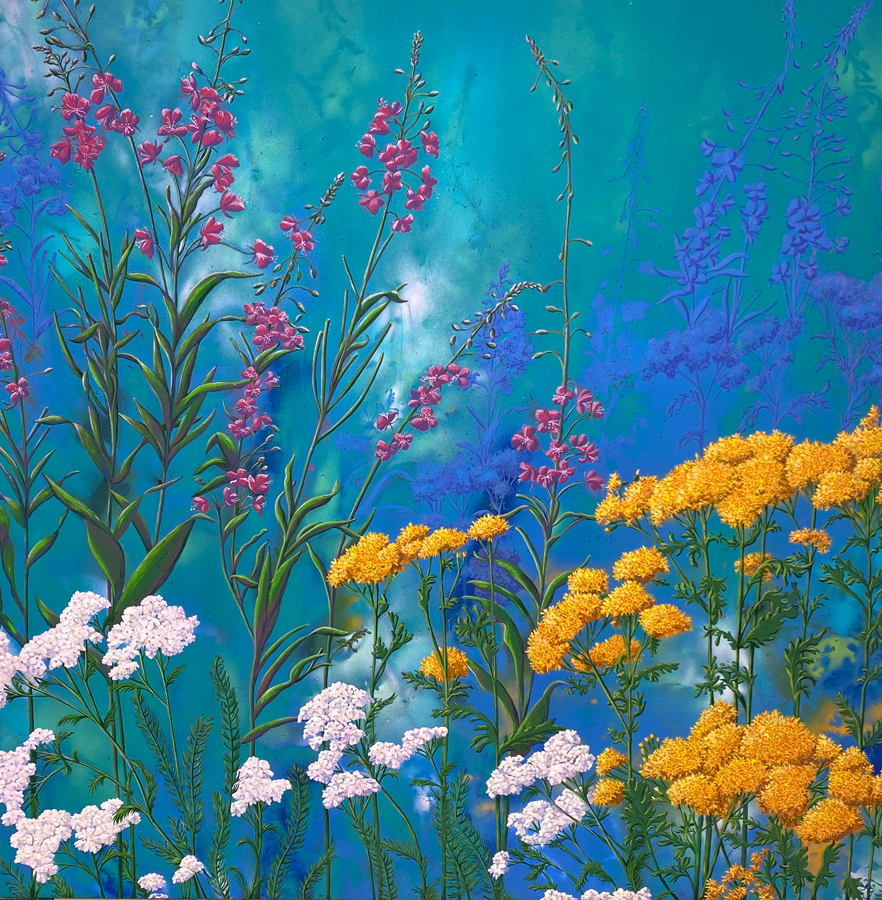
‘High Summer’
Your exhibition has travelled along the Liffey too – where has it been and where is it going to? This project resulted in an exhibition entitled Lifeforce, consisting of 27 paintings exhibited at the United Arts Club in Dublin. The paintings ranged from bog cotton landscapes at the source to an underwater piece describing the place where the river becomes tidal at Islandbridge. When the exhibition was over, I resolved that it should travel along the Liffey. Last month, seven paintings from the exhibition went to City Quay as part of the Dublin Painting & Sketching Club 147th annual exhibition. I was honoured to be this year’s featured artist.
Next, Lifeforce lands back in Kildare. I’m delighted to be showing the work at Celbridge Community Library where there’s a strong ethos and awareness of conservation. Professor John Sweeney, expert in climatology at Maynooth University will launch the exhibition.
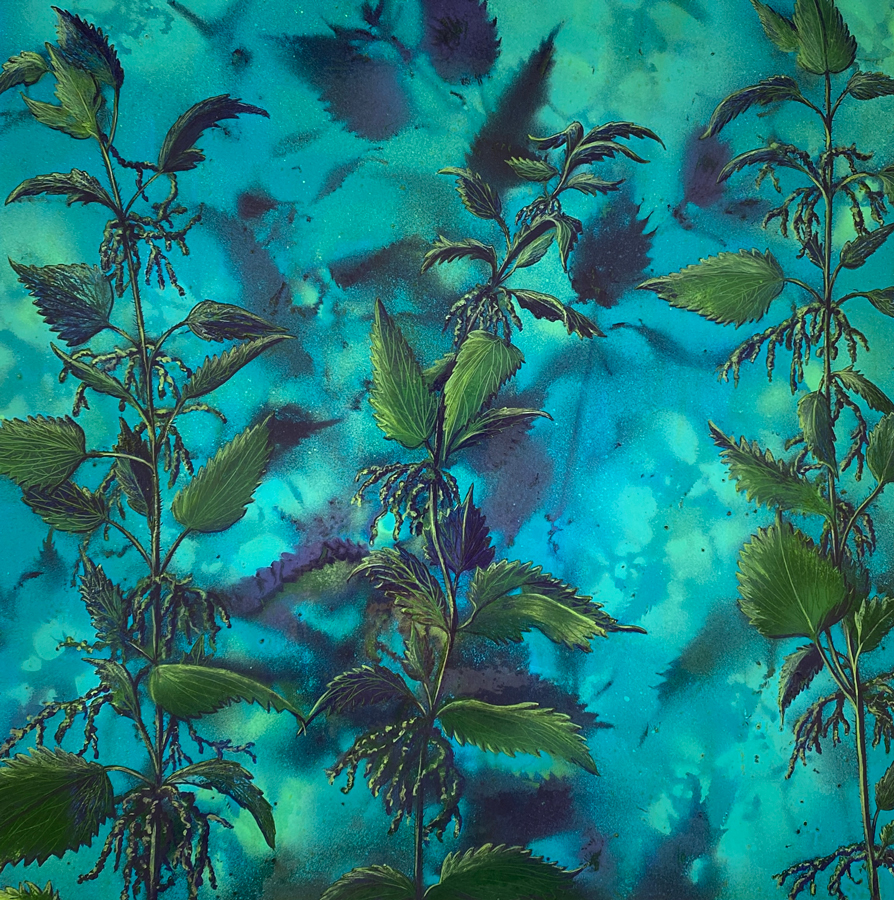
‘Butterfly Nursery’
Have you added to the works? Nearly a dozen new paintings have been added to the exhibition. Some went to new homes, so I’ve continued to paint with this theme in mind. The Liffey is actually such a huge subject, and I could be inspired by it for some time to come!
What do you hope visitors will take away from the exhibition? I hope that visitors think about the importance of this water source – how people and industry rely on it, how it can’t be taken for granted, and not to assume that it will always be there. To look after it as it looks after us. Of course, I hope that they’ll enjoy the paintings, compositions and vibrant colours that celebrate this magnificent river.
Need to know: Lifeforce exhibition by Kathrine Geoghegan opens on November 4 in Celbridge Community Library, Co Kildare and continues until November 27. @kathrinegeoghegan
SEE MORE: Artistic License – Yanny Petters




